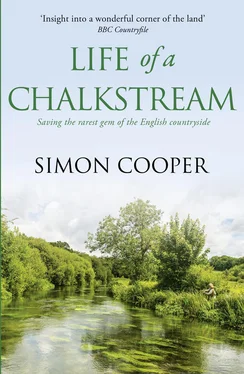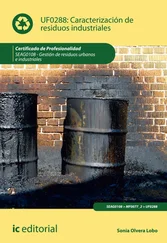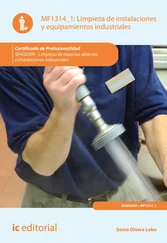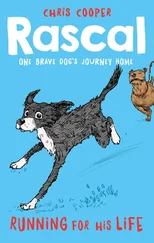The spawning grounds created by salmon and trout in the gravel riverbed are known as redds, and the sight of the first redds, be it in October or November, is something of a red-letter day for us chalkstream watchers. Indeed, redd-spotting becomes something of an obsession from around October time. I say ‘around’ because rivers don’t obey the Gregorian calendar. Like the snowdrops in your garden that appear in January one year and February the next, the creatures of the river adapt their habits according to what’s happening around them, which is in turn dictated by the climate. And not only the weather of now; the effects of a dry summer or harsh winter for instance, may linger many months or years to come.
I’ll get excited text messages from river keepers: Seen a redd today. First of the year!!!!!!!!!!!  . It is exciting because amid the gloom of late autumn and the winding down of a fishing season, it is a small ray of hope for things to come, however distant. It is also proof that as a river keeper you are doing something right. Your river is so damn perfect that fish want to breed in it. How good is that?
. It is exciting because amid the gloom of late autumn and the winding down of a fishing season, it is a small ray of hope for things to come, however distant. It is also proof that as a river keeper you are doing something right. Your river is so damn perfect that fish want to breed in it. How good is that?
Walking beside the river, you will find the redds are easy to spot once you know what you are looking for: pale lozenge-shaped indentations on the river bottom, with a mound of gravel at the downstream end. Brushed clean of silt and debris, they shine out like lights compared with the surrounding gravel. Sometimes there is just one, sometimes a cluster, but it is the size that immediately marks out the difference between a trout and a salmon redd: the former about the size of a snowshoe, the latter a good-sized door mat. And there is more latent intent about the salmon redd; it will be dug deeper, down to the hard base beneath the gravel. Random gravel stones from the digging will be scattered far and wide across the riverbed. The mound of stones at the end will be much higher and more pronounced. Redds are, of course, made by the fish themselves to harness the flow of well-oxygenated water through the loose gravel to incubate their eggs, and oftentimes the hen will lay in more than one redd. Laying in a single redd is quite literally putting your eggs in one basket, and that basic instinct to perpetuate the species drives the hen to hedge her bets by laying in a series of redds, maybe with other hens. But we have to track back in time to appreciate how and why we have arrived at this point.
From my daily walks up and down the river the progress of the trout from an everyday Salmo trutta to a body quivering as if electrocuted whilst he releases his milt over the eggs is far easier to track than that of Salmo salar , the Atlantic salmon. It is in September that I start to see the first signs of spawning in the trout, who start to change in appearance in the weeks before they start the actual process of cutting redds and spawning. Suddenly that headlong pursuit of every item of food to feed on in preparation for the winter ahead slackens off. The fish are just as active, but not for food. Somewhere in their fishy brain the search for food is replaced by the search for a mate. The change sweeps over their body and suddenly that golden-brown complexion is replaced by a fierce red blush along both flanks. The males sprout a vicious-looking hook – a kype – on their jaw. The kype is largely for show, but it does make an otherwise innocuous-looking trout look like someone you would not want to mess with.
During this time the salmon are absent from this river, still making their way along the English Channel from the Atlantic to pick up the scent of their birth river somewhere on the south coast. How salmon navigate the entire journey to the far side of the Atlantic to the waters off Greenland and back again remains something of a mystery. The position of the sun, the stars and the gravitational pull of the earth are all cited as guides, but it is certain that the final leg of the journey is determined by smell.
Salmon never look to me like creatures that depend on smell for survival – their incredible ability to leap huge waterfalls or swim unceasingly for months on end seem more important – but smell is the thing. Early on in their lives they imprint the odour of their birth river onto a hormone that is secreted in the thyroid gland; it stays with them for evermore. Their hormonal library of smells is highly selective; only the ones that really matter make it onto the data bank. Likewise they will log the odour of their brothers and sisters in the river, picking up their scent in later years when the shoals are travelling across the ocean.
By the time our salmon sniffs the first scent of home, he or she has surmounted incredible odds to make it thus far. Of those 5,000 eggs laid three years ago in the River Evitt, our salar is probably the sole survivor, or at best one of two. And the dangers are far from over. Ravenous seals are gathering for an autumn feast and the drift nets in the estuary are laid in wait. It is the misfortune of salmon that they make such good eating, though it should be of no surprise. They are super-fit and have spent the past two to three years in the beautifully clean water of the Greenland Sea eating nothing but squid, shrimp, crustaceans, small cod and mackerel.
As far back as medieval times salmon has commanded a premium price, so the ever-resourceful coastal communities around Britain developed the highly efficient drift net to capture the salmon returning from the sea. There are all manner of types of drift netting, each of which has evolved for the particular locality, but the principle holds good for them all: wait for the tide to go out and then set your nets in such a way that they intercept the salmon travelling towards the estuary bottleneck on the inbound tide.
Travelling around the coastline of Britain you will see all sorts of weird and wonderful nets rigged up to capture salmon, though they are becoming fewer. Declining runs of salmon, fierce campaigning by conservation groups to have the nets removed and the harsh demands of a truly hard and difficult job are all contributing to the decline.
The simplest form of drift netting is a long net, anything from 30 yards to a few hundred, and 5 to 10 feet deep, that is slung across the tide, supported by floats along the upper edge. In shallow water it will be held in place at each end by a man holding a pole; in deeper water by boats. As the tide races through, the salmon follow, to get caught in the mesh of the net. The netsmen gather the ends of the net into a circle, capturing the salmon by hand as the circle gets smaller.
Not surprisingly this fast, efficient method is the one most favoured by poachers, but it is the fixed nets that are more typical of traditional salmon netting in the estuaries: wooden posts supporting nets that face the incoming tide. Sometimes the nets will be shaped like giant boxes as large as a van, 10 to 15 feet above the beach level, open on one side. Other times they are funnel-shaped. Or most simply, nets loosely slung between posts like a garden fence. One way or another they are doing the same job of entangling the salmon, which become more trapped the more they struggle. As the tide ebbs some of the fish will escape, but once the nets are exposed to the air the salmon don’t have long to last and the netsmen will appear to complete the harvest.
Fortunately for our salmon heading for the Evitt, these dangers are slight. The seal population along the south coast is sparse compared with say the northwest of Scotland and the estuary netting is now less common than it once was. Ahead is the brackish water of the estuary and beyond that the purity of the chalkstream water, although this change from seawater to fresh will quickly change our salmon’s physiology as the body cells, body and organs adapt for the months to come. Such problems do not trouble our brown trout, whose sole mission at this point is to find a mate. No swimming over thousands of miles for him. His potential partner may be one of the other trout that have lived within a few hundred yards of him for all their lives. There never seems to me any great logic or grand plan to the way trout choose their partners. There will be a bit of swimming around, occasionally another male will sidle up beside a paired female to be promptly chased away, but on the whole it all seems to happen at random. Or that is how it looks to me with my bank-down view, but scientists think there is more to it than this, and that even fish have that ‘eyes across a crowded room’ moment when the right mate comes into view. Nobody knows exactly what is going on in and around those redds, but somehow skin colour, conformation, size, pheromones or possibly a mix of these and other factors combine to make their choice a complex matter.
Читать дальше

 . It is exciting because amid the gloom of late autumn and the winding down of a fishing season, it is a small ray of hope for things to come, however distant. It is also proof that as a river keeper you are doing something right. Your river is so damn perfect that fish want to breed in it. How good is that?
. It is exciting because amid the gloom of late autumn and the winding down of a fishing season, it is a small ray of hope for things to come, however distant. It is also proof that as a river keeper you are doing something right. Your river is so damn perfect that fish want to breed in it. How good is that?










